Tropicsport Mineral Sunscreen Lotion SPF 30 Review
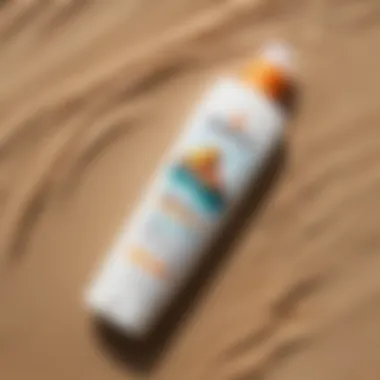
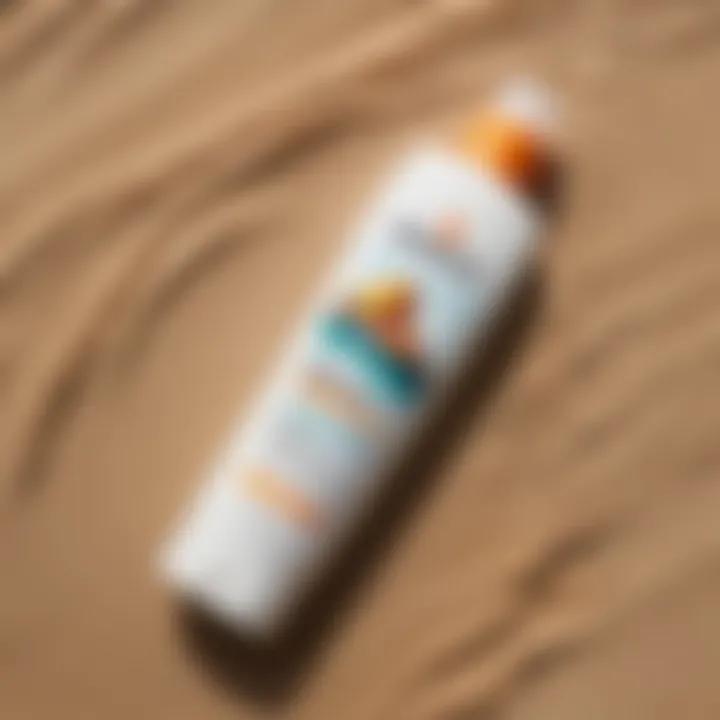
Intro
Choosing the right sunscreen is a vital part of any surfer's routine, especially when you consider the harsh conditions of sun exposure while battling the waves. This article focuses on Tropicsport Mineral Sunscreen Lotion SPF 30. It offers an in-depth look at its formulation, effectiveness, and how it stands up to the rigors of surfboarding.
Surfers and enthusiasts alike would benefit from understanding the unique properties of mineral sunscreens. Tropicsport's formula distinguishes itself not only by protecting the skin but also by aligning with eco-friendly practices. This ensures that as you enjoy the surf, you’re also considerate of marine ecosystems.
Whether you're a novice just paddling out for the first time or a seasoned wave rider familiar with the nuances of ocean navigation, this article has it all. So hang ten and let’s explore the benefits and applications of this standout sunscreen!
Intro to Sunscreen in Surfing
Surfing is more than just a hobby; it's a lifestyle that connects enthusiasts to the rhythm of the ocean. Yet, amid the thrill of catching waves, there's a vital aspect that can easily slip under the radar—sun protection. As surfers spend hours under the intense sun, understanding the role of sunscreen becomes essential.
The Importance of Sun Protection for Surfers
Surfers are often exposed to harmful ultraviolet (UV) radiation for prolonged periods. The combination of sun, sea, and reflected rays increases the risk of skin damage significantly. Skin cancers and premature aging can result from routine sun exposure without adequate protection. It's not merely about putting on sunscreen once and forgetting. Extensive and routine application is the name of the game.
Furthermore, skin health directly correlates with overall performance. If a surfer’s skin is irritated or sunburnt, it can lead to discomfort, affecting their enjoyment and ability to ride the perfect wave. Protecting the skin isn't just a matter of health; it's about maximizing the surfing experience itself. By adopting a proactive approach towards sun care, surfers can effectively prolong their time on the water while keeping their skin safe.
Overview of Different Types of Sunscreens
Not all sunscreens are created equal, especially when it comes to surfing. The market offers a variety of options, each designed with specific ingredients and functionality.
- Chemical Sunscreens: These typically absorb UV radiation. They often contain ingredients like oxybenzone and avobenzone. While they can be more lightweight and easier to apply, some users find that they can cause skin irritation. Furthermore, certain chemical compounds are harmful to marine life, which raises eyebrows among eco-conscious surfers.
- Mineral Sunscreens: Unlike their chemical counterparts, these work by sitting on the skin's surface and deflecting UV rays. Common active ingredients include zinc oxide and titanium dioxide. Many surfers gravitate toward mineral options, especially due to their reef-safe qualities and less potential for skin reactions.
- Water-Resistant Formulas: Given the nature of surfing, prolonged exposure to water is inherent. Thus, water-resistant sunscreens are a must. These products are designed to maintain their SPF effect even when splashed with water, though it’s essential to understand that 'water-resistant' does not mean 'waterproof'.
Choosing the right sunscreen boils down to knowing personal skin types, preferences, and awareness of environmental impacts. Understanding these distinctions allows surfers to make informed choices, helping them protect their skin while also respecting the ocean they love.
Tropicsport Brand Overview
Understanding the Tropicsport brand is essential when examining its mineral sunscreen lotion SPF 30. Known for its commitment to both performance and sustainability, Tropicsport has carved a niche in the market for surfers and ocean enthusiasts alike. The focus on high-quality ingredients and environmentally friendly practices makes Tropicsport a key player in the niche of surf-related personal care products.
History and Mission
Tropicsport emerged from simple beginnings, aiming to fill a gap in the surf market with safe and effective sun protection. Established a couple of decades ago, Tropicsport’s mission has always centered around providing reliable products tailored specifically for outdoor adventurers. The founders recognized the harsh conditions surfers face—exposure to the blazing sun and the damaging effects of seawater on skin and hair. Thus, they made it their goal to create sunscreen that not only protects but also supports the health of both users and the environment.
What sets Tropicsport apart is its strong ethos towards environmental preservation. The brand's dedication is evident in their active involvement with marine conservation efforts, which aligns their product offerings with broader ecological goals. The mission isn’t just about selling sunscreen; it’s about cultivating an awareness and responsibility towards ocean health among users. This mission resonates especially well with today's eco-conscious surfers who seek brands that reflect their values.
Product Range and Specialization
Tropicsport offers a comprehensive range of sunscreens, with the mineral sunscreen lotion SPF 30 taking center stage. This product specialization revolves around two main aspects: efficacy and safety in aquatic environments.
- Mineral Sunscreen Formulation: The mineral formulas utilize naturally derived ingredients, primarily zinc oxide and titanium dioxide, which provide broad-spectrum protection without the absorption of potentially harmful chemicals.
- Water Resistance: Specifically designed for surfers, this sunscreen boasts a water-resistant feature, meaning it stays effective even after hours in the ocean or sweating under the sun. This quality is crucial for surfers, who need long-lasting protection amidst the dynamic challenges of ocean sports.
- Cruelty-Free Approach: Tropicsport prides itself on being cruelty-free, ensuring no animal testing occurs at any stage of product development. This resonates with a growing market trend where consumers prioritize ethical practices in their purchasing decisions.
With a reputation for quality and sustainability, Tropicsport remains a key reference point when discussing effective sun protection for those who love the surf and strive to maintain the health of our oceans.
Mineral Sunscreens Defined
In recent years, the dialogue around skincare has gained momentum, especially concerning sun protection, which is paramount for surfers. The category of mineral sunscreens specifically offers a compelling alternative to common chemical formulas. It involves a blend of science, environment, and personal care. With concerns about skin health and ecological safety becoming increasingly pertinent, understanding mineral sunscreens is essential for any surfer looking to balance their love for the ocean with their commitment to personal and environmental well-being.
Key Ingredients and Their Functions
Mineral sunscreens rely primarily on two active ingredients: zinc oxide and titanium dioxide. Unlike their chemical counterparts that absorb UV rays, these ingredients work by acting as physical blockers. When applied to the skin, they form a protective layer that reflects and scatters harmful rays from the sun, preventing them from penetrating the skin.
- Zinc Oxide: It's celebrated not only for its broad-spectrum protection against both UVA and UVB rays but also for its gentle nature on the skin. This is particularly beneficial for those with sensitivities or conditions such as eczema, making it a go-to option for many surfers after hours under the sun.
- Titanium Dioxide: While also effective, titanium dioxide tends to focus more on shielding against UVB rays. It has been noted for its ability to provide a lighter feel on the skin compared to zinc oxide, which may appeal to those who dislike the heavier texture of some mineral creams.
Investing in a sunscreen that harnesses these components is crucial when you’re eagerly paddling out into the surf. Not only do they promise substantial protection, but they also ensure that surfers are taking an eco-conscious step by steering clear of potentially harmful chemicals that can leach into marine life.
How Mineral Sunscreens Differ from Chemical Options
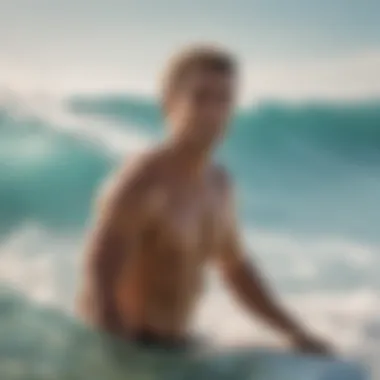
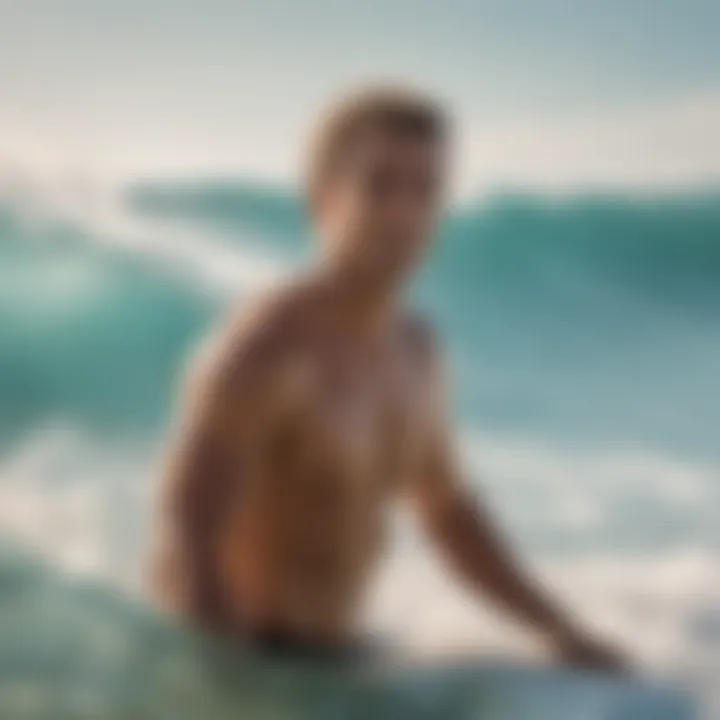
Diving into the contrasting worlds of mineral and chemical sunscreens reveals substantial differences that can dictate a surfer’s choice of sun protection.
- Mechanism of Action: Mineral sunscreens create a physical barrier on the skin, while chemical sunscreens absorb UV radiation through their chemical formulas. This difference is not just a matter of preference but also impacts how each type interacts with the skin. Many surfers find that mineral applications can feel heavier but provides extended protection, important when you're exposed to intense sunlight for extended periods.
- Skin Sensitivity: People that grapple with skin sensitivities or allergies may find mineral options more suitable. They are less likely to cause irritation often associated with synthetic ingredients present in chemical sunscreens. Choosing the right sunscreen shouldn't feel like fastening a seatbelt in a rollercoaster; it should offer confidence and peace of mind.
- Environmental Impact: The ecological repercussions of using chemical sunscreens are becoming more pronounced. Many chemicals found in typical sunscreens have been associated with coral bleaching. Mineral sunscreens, especially those marketed as reef-safe, provide a healthier companion to both your skin and the ocean, reflecting the growing consciousness towards preserving underwater ecosystems.
"Choosing a sunscreen should reflect not just individual skincare needs but also a commitment to protecting the playground of our surf community."
To sum it up, understanding mineral sunscreens is like knowing the rhythm of the waves. It’s about making informed choices that come together to create a personally tailored defense against the sun, ensuring a healthy surf experience both now and for future generations.
Tropicsport Mineral Sunscreen Lotion SPF 30: Composition
Understanding the composition of Tropicsport Mineral Sunscreen Lotion SPF 30 is crucial for surfers and outdoor enthusiasts who seek effective sun protection without compromising their health or the environment. In this section, we’ll delve into the fundamental elements of this sunscreen, highlighting its active ingredients and the absence of harmful chemicals. This knowledge enables users to make informed decisions about sunscreen products, ensuring optimal skin safety and sustainability during beach adventures.
Active Ingredients Analysis
Tropicsport Mineral Sunscreen is primarily composed of zinc oxide and titanium dioxide. These are well-known mineral blockers that create a physical barrier against the sun's harmful rays. Zinc oxide offers broad-spectrum protection, meaning it shields the skin from both UVA and UVB rays. On the other hand, titanium dioxide serves to reflect UV radiation while being less irritating for sensitive skin types.
- Zinc Oxide: Offers superior protection against UVB rays which cause sunburn and some types of skin cancer. It is also effective against UVA rays, which lead to premature aging.
- Titanium Dioxide: While also providing UV protection, it is often used for its gentle nature, making it suitable for children and those with sensitive skin.
The combination of these two active ingredients not only enhances protection but also ensures that the sunscreen is safe and effective for surfers who spend prolonged periods in the sun.
Furthermore, the texture of the lotion is such that it allows for easy application. Surfers need a product that spreads smoothly over the skin, providing coverage without feeling heavy or greasy. This aspect is especially important when you're catching waves or spending the day on the beach.
Absence of Harmful Chemicals
One of the standout features of Tropicsport's formulation is its commitment to an ingredient list devoid of harmful chemicals. Many mainstream sunscreens contain ingredients like oxybenzone and octinoxate, which have been linked to various skin and health concerns. Moreover, these chemicals can contribute to coral bleaching, causing significant harm to marine ecosystems.
By opting for a mineral-based sunscreen, Tropicsport ensures:
- No Oxybenzone or Octinoxate: These compounds are often scrutinized for their negative environmental impact, especially towards coral reefs.
- Paraben-Free: Parabens are preservatives that some studies suggest could disrupt hormonal balance; their absence points to a safer choice for skin health.
- No Synthetic Fragrances or Dyes: Minimizing allergens and irritants makes this sunscreen particularly appealing for users with sensitive skin.
"The absence of harmful chemicals not only protects your skin but also preserves the marine environment we enjoy so much."
Choosing Tropicsport is a conscious decision towards safer sun protection, supporting not just personal health but also the sustainability of our oceans.
Overall, a closer look at the composition reveals that Tropicsport's Mineral Sunscreen Lotion SPF 30 stands as a thoughtful solution for those who are not just passionate about surfing but also care for their skin and the planet.
Application Guidelines for Surfers
When it comes to hitting the waves, applying sunscreen is not just a recommendation; it’s a necessity. The sun can be merciless, especially for surfers who spend extended hours under its direct rays. Understanding how to apply sunscreen properly ensures maximum protection against UV damage, enhancing not only performance but also long-term skin health. This section will shed light on essential application techniques and reapplication frequency for Tropicsport Mineral Sunscreen Lotion SPF 30, crucial for anyone riding the surf.
How to Properly Apply Sunscreen
Applying sunscreen might seem straightforward, but there’s a technique to it that many overlook. Here’s how you can make sure you’re protected:
- Choose the Right Amount: A generous amount is key. Most experts suggest around one ounce—about the size of a shot glass—for complete protection for your body. Don’t skimp here!
- Apply Before Heading Out: Ideally, apply the sunscreen at least 15 to 30 minutes prior to sun exposure. This gives the minerals in the formula time to bind to your skin and start working effectively.
- Don’t Rush It: Slather on the sunscreen thoroughly. Pay special attention to high-risk areas like the nose, ears, and back of the neck. These spots are often neglected but are vulnerable to sunburns.
- Use a Circular Motion: Rub the lotion in evenly using a circular motion. This helps to ensure that the sunscreen is fully absorbed. Remember, it should disappear into the skin, not leave a thick visible layer.
- Reapply on Damp Skin: Surfers often get splashed with water. If you’re wet, sunscreens like Tropicsport’s are designed to adhere better. Just make sure to reapply instead of brushing water off and thinking you're still covered.
- Watch the Time: While it’s great to enjoy the surf, keeping an eye on the clock for even intervals will help you stay protected.
Following these guidelines helps in safeguarding against sunburn, which can cut your surfing escapades short, leaving you uncomfortable and doing a whole lot of covering up.
Recommended Frequency of Reapplication
One of the most common mistakes surfers make is forgetting to reapply sunscreen regularly. Whether you've been splashed by waves, sweating profusely, or even just after a couple of hours on the water, reapplication is crucial. But how often should you do it?
- Every Two Hours: As a general rule of thumb, reapply every two hours, especially for surf days. This interval ensures that you’re continuously protected, given that some of the protection will wear off over time.
- After Swimming or Toweling Off: If you've submerged yourself or wiped down with a towel, it’s vital to apply more sunscreen. Water and towel drying can easily strip away that hard-earned protection.
- In High Sunscreen Areas: If you’re surfing where the UV index is particularly high, consider reapplying more frequently. This can be especially relevant during midday hours when the sun is at its peak.
In essence, it’s all about being diligent. A day of surfing is fun, but the aftermath of an itchy sunburn is anything but. Make sunscreen application a habit, and you'll thank yourself later when you're still riding the waves rather than hiding from them due to painful peeling skin!
Remember: "An ounce of prevention is better than a pound of cure."
Evaluating the Effectiveness of SPF
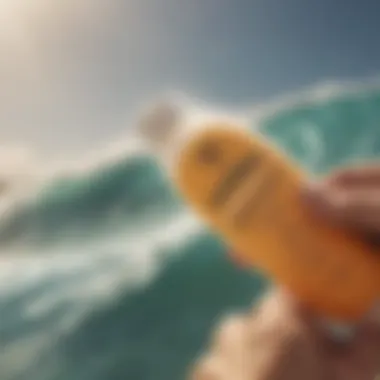
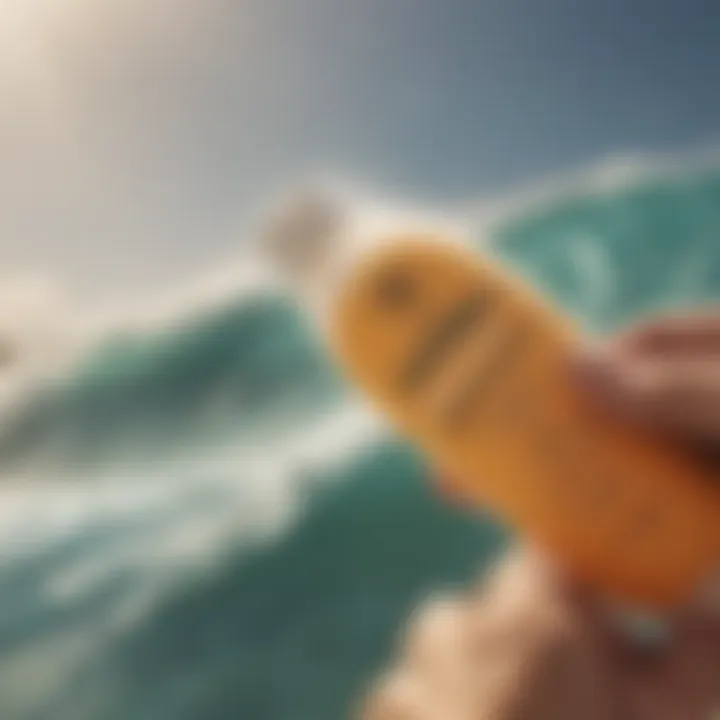
When it comes to sun protection, especially for surfers who spend long hours in the sun, understanding the effectiveness of SPF ratings is crucial. SPF, or Sun Protection Factor, is often one of the first things that people check when purchasing sunscreen. But what does this number really mean? In our exploration of Tropicsport Mineral Sunscreen Lotion SPF 30, we delve into the significance of this rating and how it plays a key role in the overall efficacy of sun protection.
One of the primary benefits of SPF 30 is its ability to block approximately 97% of UVB rays, which are primarily responsible for sunburn and can contribute to long-term skin damage. For surfers, this level of protection is paramount. A quick dip in the ocean or a sun-soaked day can easily lead to harsh sunburns. Furthermore, SPF 30 provides a buffer, allowing surfers to focus on their activity without constantly worrying about reapplication every few minutes.
Understanding SPF Ratings
To better grasp how SPF works, it's essential to decode what the numbers actually signify. The SPF rating indicates the fraction of sunburn-producing UV rays that reach the skin when wearing the sunscreen as directed. Here's a breakdown to clarify this:
- SPF 15 blocks about 93% of UVB rays
- SPF 30 enhances this to blocking around 97%
- SPF 50 provides approximately 98% protection
While many might think that doubling the SPF will lead to double the protection, that’s not the case. The reality is that the increases are marginal and highlight the importance of broader spectrum protection and proper application.
Protection Against UVA and UVB Rays
Understanding that SPF ratings primarily pertain to UVB protection, one must also consider UVA rays, which can also cause skin damage. These rays are persistent and can penetrate deeper into the skin, contributing to aging and increasing the risks of skin cancer. Tropicsport's formulation works effectively to ensure that surfers are protected against both UVB and UVA rays, making it a more rounded option for those engaging in lengthy surf sessions.
The key here is in the ingredients of the sunscreen. The mineral components of Tropicsport not only shield against UVB rays but also act as a barrier against UVA rays. For surfers, this aspect cannot be overlooked, as prolonged exposure to the sun without adequate protection could lead to detrimental effects on skin health.
"Choosing the right SPF is not just about numbers; it’s about understanding the protection levels and applying it correctly."
With all these factors taken into account, it becomes clear that SPF 30 provides an effective level of sun protection crucial for surfers. Understanding these ratings and the difference between UVA and UVB shielding can significantly affect one’s skin health, especially when engaged in outdoor activities like surfing.
Environmental Considerations
The global push for sustainability has turned the spotlight on various consumer products, and sunscreen is no exception. As more surfers hit the waves, the intersection of skincare and environmental responsibility becomes increasingly critical. The importance of environmental considerations in this article revolves around the relationship between sunscreen usage and its impact on marine ecosystems, particularly coral reefs. By highlighting reef-safe formulations and sustainable production practices, we aim to inform audiences on how their choices in sun protection affect not just their skin but also the oceans they cherish.
Reef-Safe Formulations
When choosing a sunscreen, many surfers are unaware of the potential harm certain ingredients can inflict on marine life. For example, common compounds like oxybenzone and octinoxate are known to be harmful to coral reefs. These substances can contribute to coral bleaching, disrupt marine biodiversity, and harm aquatic organisms. Hence, reef-safe formulations have gained traction as a preferred choice for environmentally-conscious surfers.
Tropicsport Mineral Sunscreen Lotion SPF 30 stands out due to its commitment to using mineral-based ingredients, such as zinc oxide and titanium dioxide. These components not only effectively block harmful UV rays, but they do so without causing harm to the delicate ecosystems found beneath the waves.
"Using mineral sunscreens helps retain the natural beauty of our oceans, while keeping our skin protected from the sun's harsh rays."
It's essential for surfers to check labels for certifications or labeling that indicate reef-safe status. They are making an impactful choice not only for their skin, but also for the health of the ocean environment.
Sustainable Production Practices
The story doesn’t end with the product itself; it extends to how it is made. Sustainable production practices are crucial elements of eco-friendly products. With rising awareness about climate change, consumers are looking for brands that prioritize ethical sourcing, energy-efficient manufacturing, and responsible waste management.
Tropicsport exemplifies this approach by adopting practices that minimize their environmental footprint. For instance, sourcing raw materials from suppliers that prioritize sustainable farming not only supports local economies but also reduces the impact on natural habitats.
Moreover, the company invests in innovative production methods that reduce water usage and energy consumption. This results in higher-quality products without the guilt of harming the planet.
Surfers can feel good about using products from brands that prioritize both performance and environmental responsibility. Such practices reinforce the belief that protecting our skin doesn’t have to come at the expense of our oceans and ecosystems.
User Experiences and Reviews
When it comes to choosing a sunscreen, particularly for the active lifestyle of surfers, personal experiences can provide invaluable insights. Feedback from users not only sheds light on the product's efficacy but also highlights its strengths and weaknesses in real-world applications. This section dives deep into the voices of those who have tested the Tropicsport Mineral Sunscreen Lotion SPF 30, offering a nuanced understanding of its performance under the sun.
Feedback from Professional Surfers
Professional surfers, who spend countless hours exposed to the sun's blazing rays, often lead the charge in choosing effective sun protection. Their endorsements carry weight, considering their knowledge and experience on what works day in and day out. Many pros have leaned on Tropicsport for its mineral base, praising its lightweight texture that doesn't clog up the skin's pores.
A few standout comments from professionals include:
- “It feels like I’m wearing nothing. I can trust it to stay on while catching the perfect wave.” Surfing demands fluidity and comfort, and many surfers note that Tropicsport allows for that without the greasy feel of some traditional sunscreens.
- “I've had bad experiences with breakouts from other sunscreens. Tropicsport is different; it’s gentle and reliable.” This sentiment is crucial for athletes whose skin is both stressed by saltwater and subject to the sun’s harsh glare.
Such feedback emphasizes that not all sunscreens are created equal. For athletes, a sunscreen needs to be more than just a layer; it needs to perform under demanding conditions, which is exactly where Tropicsport gains its foothold.
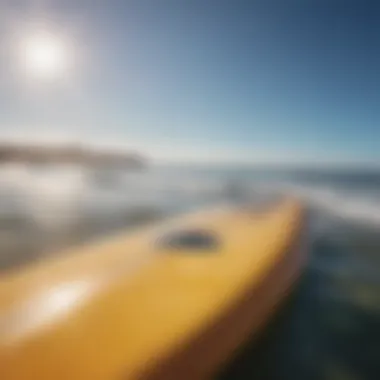
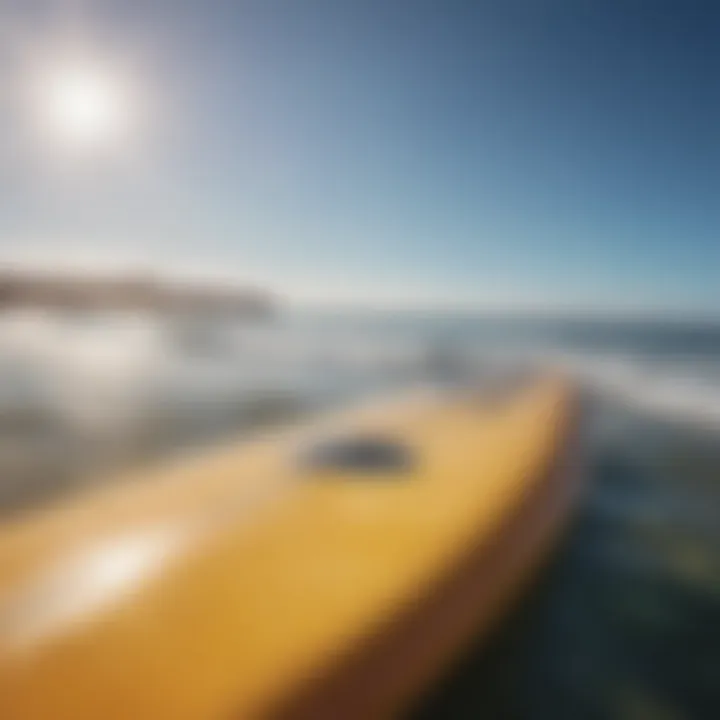
Common Issues and Complaints
While it's all well and good to hear about success stories, no product is without its challenges. Some users have pointed out specific concerns regarding Tropicsport, which are worth considering:
- Application Challenges: Some surfers noted that the lotion could be thick and require a bit of elbow grease to spread evenly. For surfers in a hurry, this can be a bit of a hassle. It’s always better to invest time in applying it properly than to risk sun damage later.
- White Cast: Another prevailing criticism is related to the notorious "white cast" that mineral sunscreens can leave behind. Users have mentioned that even after thorough blending, a slight cast can persist, which might affect aesthetic preferences, particularly for those who prioritize a natural look.
- Water Resistance: While Tropicsport is marketed as water-resistant, some surfers reported needing to reapply sooner after intense wave sessions. This highlights the need for surfers to be aware of their unique conditions and apply accordingly.
Despite these issues, the overall reception of Tropicsport Mineral Sunscreen has remained positive among surfers.
"Sometimes, it's not so much about what the product claims, but how it stands up to the test of time in the water. Those are the moments where you find what truly works!"
In summary, user experiences provide not only commendations but also constructive criticism for the Tropicsport Mineral Sunscreen Lotion SPF 30. Understanding both the accolades and concerns enables users to make informed decisions, leading to more enjoyable and safer surfing adventures.
Comparative Analysis
Understanding how Tropicsport Mineral Sunscreen Lotion SPF 30 stacks up against its competitors is vital for surfers looking to protect their skin effectively while engaging with the ocean's elements. This comparative analysis provides insight into various mineral sunscreens, highlighting effectiveness, ingredient integrity, user satisfaction, and price point.
A good sunscreen does not just shield the skin; it needs to perform well in specific environments, especially for surfers who are often exposed to intense sun, saltwater, and wind. Highlighting similarities and differences among products can help consumers make informed choices that align with their safety and environmental values.
Comparison with Other Mineral Sunscreens
When it comes to picking a mineral sunscreen, having a solid comparison is like having a roadmap. For instance, when putting Tropicsport up against others like Neutrogena Sheer Zinc and Banana Boat Mineral Balance, the differences can sometimes land in unexpected territories. While all three share zinc oxide as a primary active ingredient, the formulation and texture can vary widely. Some might find that Tropicsport has a more lightweight feel that absorbs better into the skin compared to the slightly heavier consistency of Banana Boat.
- Broad Spectrum Protection: All three options provide UVA and UVB protection, but Tropicsport shines with its focus on mineral-based, reef-safe ingredients. This makes it preferable for eco-conscious surfers.
- Water Resistance: Tropicsport holds an impressive water resistance rating of up to 80 minutes, similar to its competitors, thereby effectively supporting prolonged exposure in water.
- Skin Feel: Many users find that Tropicsport does not leave a white cast, which can often be a nuisance with other mineral sunscreens, leading to a more enjoyable application experience for a diverse skin range.
Cost-Benefit Evaluation
Purchasing a sunscreen often involves balancing effectiveness and cost. Tropicsport Mineral Sunscreen is typically priced moderately within the market, but let's dig deeper into the cost-benefit aspect!
- Pricing: While Tropicsport might not be the cheapest option on the shelf, it's essential to consider what you’re paying for. Cheaper options sometimes rely on chemical formulations, which surfers may want to avoid.
- Quality of Ingredients: Investing in a higher-priced product like Tropicsport can lead to benefits in skin health and environmental safety, making it worth every penny. It’s like choosing between a fast-food burger and a grass-fed beef patty—you know you’ll feel better after the latter.
- User Satisfaction: According to various user reviews on platforms like Reddit and surf forums, consumers tend to notice a diminished frequency of sunburn when using Tropicsport compared to less effective brands.
- Eco-Friendly Credentials: Often, spending a bit more translates into better sustainability practices. The sacrifices in your wallet can lead to broader benefits for coral reefs and marine life, which is invaluable for surfers who cherish the waters they ride.
"A sunscreen is only as good as the protection it provides, but why not choose one that respects the ocean while keeping your skin safe?"
Long-Term Use and Skin Health
Understanding the relationship between long-term use of sunscreen and skin health is particularly relevant for surfers, who often find themselves battling harsh sun conditions on a regular basis. The skin is your body’s first line of defense, and maintaining its integrity is crucial for overall health. Tropicsport Mineral Sunscreen Lotion SPF 30 provides a means to protect the skin from harmful ultraviolet rays, but what are the prolonged effects of using such a product?
Surfers are consistently exposed to sun and its rays. This exposure can lead to both immediate effects, such as sunburn, as well as long-term skin damage, including premature aging or skin cancers. As part of a broader regimen, using a mineral sunscreen like Tropicsport is not just about the here and now, it’s about safeguarding against future complications.
Assessing Skin Tolerance and Allergies
When it comes to skin care products, it’s vital to ensure that they are suitable for the individual’s skin type. Some people may experience irritation or allergic reactions, particularly with chemical sunscreens. Mineral sunscreens, including the one from Tropicsport, generally feature ingredients like zinc oxide and titanium dioxide, which are less likely to irritate skin compared to their chemical counterparts. However, it's not a one-size-fits-all solution.
- Patch Testing: Before committing to long-term use, it’s wise to test a small amount of product on a discreet area of skin.
- Read Ingredient Labels: Each individual might react differently to other elements in the formulation. Checking labels for known allergens or irritants can be a smart strategy.
- Consult a Dermatologist: For surfers with sensitive skin or known allergies, seeking medical advice can provide personalized recommendations.
Effects of Prolonged Exposure to Sunlight
The sun's rays are notorious for causing damage over time. Up close, the initial golden tan might seem alluring, but underneath lies the potential for serious skin issues. Regular use of a quality sun protection product is crucial for managing these effects. Tropicsport’s mineral formulation works to physically block harmful UV rays, which can penetrate the skin's layers and lead to conditions like photoaging, pigmentation irregularities, and in severe cases, skin cancer.
It's important to consider the following effects when thinking about long-term sun exposure:
- Photoaging: This refers to the skin's accelerated aging process due to the sun, which can manifest as wrinkles or loss of elasticity.
- Hyperpigmentation: This is when certain areas of the skin darken, leading to uneven skin tone.
- Skin Cancer: Ultraviolet radiation is a leading cause of various skin cancers, making continuous protection a matter of health.
End
Summarizing the journey through the world of Tropicsport Mineral Sunscreen Lotion SPF 30, it becomes clear that this product is not just a choice but a necessity for those who embrace the sun while catching waves. The importance of proper sun protection cannot be understated, especially for surfers who tend to spend long hours exposed to UV rays. Tropicsport stands out as a thoughtful option, balancing effective sun defense with environmentally conscious practices.
Summary of Key Points
- Mineral Sunscreen Benefits: Tropicsport uses zinc oxide, providing broad-spectrum protection against harmful UVA and UVB rays. Mineral sunscreens like this one create a physical barrier on the skin, reflecting sunlight.
- Environmental Concerns: Its formulation is safe for reefs, addressing critical issues surrounding marine life that are often harmed by chemical sunscreens. This adds a layer of responsibility and appeal for eco-aware surfers.
- User Experience: Reviews from professional athletes highlight ease of application and staying power, essential when riding the waves. Users report minimal residue and a comfortable feel, indicating a well-designed product.
- Cost vs. Value: While the price point may be higher than average, the blend of efficacy, safety, and environmental regard suggests it provides notable long-term value. Investing in such sunscreen is investing in skin health and well-being.
Final Thoughts on Tropicsport Sunscreen
Dedicating time to understand Sunscreen is crucial in today’s suncare market. Tropicsport's commitment to quality not only ensures surfers can enjoy the ocean safely but also promotes sustainability, encouraging others to make responsible choices. The unique combination of a strong SPF with eco-friendly principles makes it an attractive option for anyone who loves the water.
Ultimately, Tropicsport Mineral Sunscreen Lotion SPF 30 is more than a sunscreen; it's a thoughtful partner for all sea adventurers looking to protect themselves and the environment. Choosing a product that mirrors their principles and needs enables surfers to focus on enjoying their passion without worrying about the harms of sun exposure.















